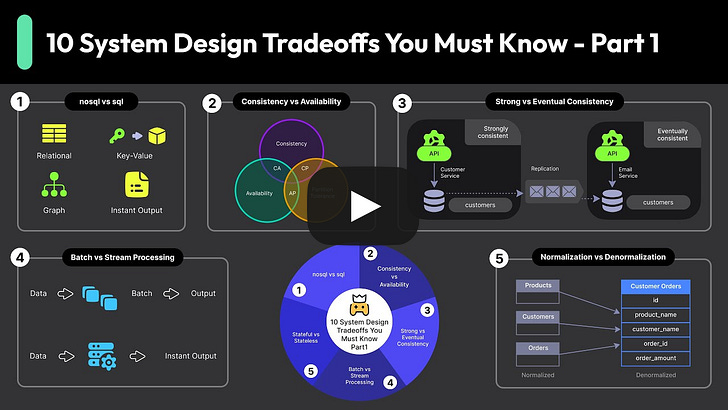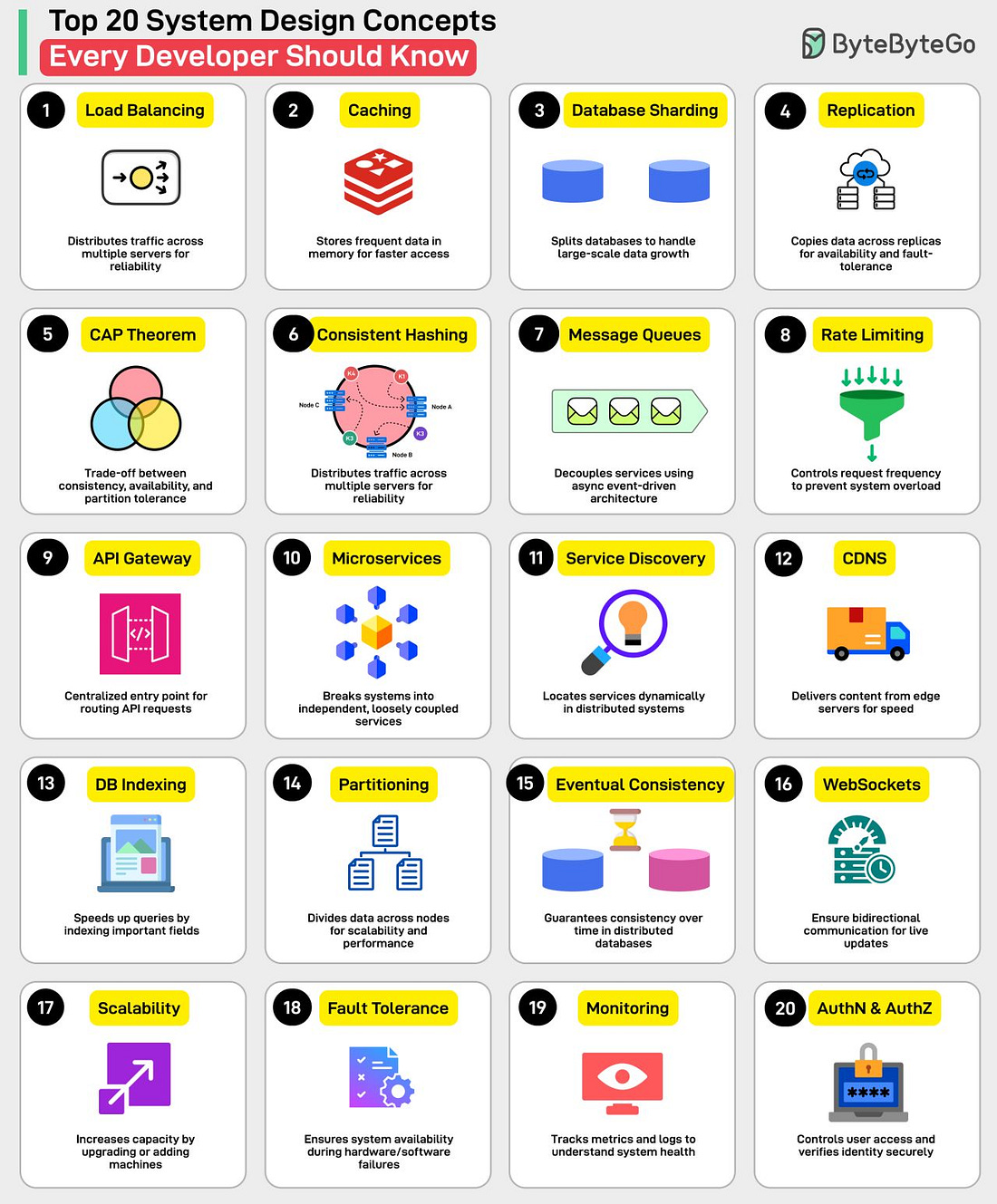|
✂️Cut your QA cycles down to minutes with QA Wolf (Sponsored)
If slow QA processes bottleneck you or your software engineering team and you’re releasing slower because of it — you need to check out QA Wolf.
QA Wolf’s AI-native service supports web and mobile apps, delivering 80% automated test coverage in weeks and helping teams ship 5x faster by reducing QA cycles from hours to minutes.
QA Wolf takes testing off your plate. They can get you:
Unlimited parallel test runs for mobile and web apps
24-hour maintenance and on-demand test creation
Human-verified bug reports sent directly to your team
Zero flakes guarantee
The benefit? No more manual E2E testing. No more slow QA cycles. No more bugs reaching production.
With QA Wolf, Drata’s team of 80+ engineers achieved 4x more test cases and 86% faster QA cycles.
This week’s system design refresher:
System Design Was HARD - Until You Knew the Trade-Offs (Youtube video)
Top 20 System Design Concepts You Should Know
What is an AI Agent?
Essential Git Cheatsheet!
9 OOP Design Patterns You Must Know
The Fundamental Pillars of Object-Oriented Programming
SPONSOR US
System Design Was HARD - Until You Knew the Trade-Offs

You have developer productivity metrics — now what? (Sponsored)
DX CTO Laura Tacho has coached hundreds of engineering leaders on using developer productivity data—and in this guide, she explains how to use data to drive continuous improvement at all levels of an organization.
In this guide, you'll learn:
Different use cases for measurement and how this affects which metrics to use
Distinguishing between 'diagnostic' and 'improvement' metrics
How to use metric mapping to go from big picture to granular targets
Setting expectations for how metrics should be used within a company
Top 20 System Design Concepts You Should Know
Load Balancing: Distributes traffic across multiple servers for reliability and availability.
Caching: Stores frequently accessed data in memory for faster access.
Database Sharding: Splits databases to handle large-scale data growth.
Replication: Copies data across replicas for availability and fault tolerance.
CAP Theorem: Trade-off between consistency, availability, and partition tolerance.
Consistent Hashing: Distributes load evenly in dynamic server environments.
Message Queues: Decouples services using asynchronous event-driven architecture.
Rate Limiting: Controls request frequency to prevent system overload.
API Gateway: Centralized entry point for routing API requests.
Microservices: Breaks systems into independent, loosely coupled services.
Service Discovery: Locates services dynamically in distributed systems.
CDN: Delivers content from edge servers for speed.
Database Indexing: Speeds up queries by indexing important fields.


